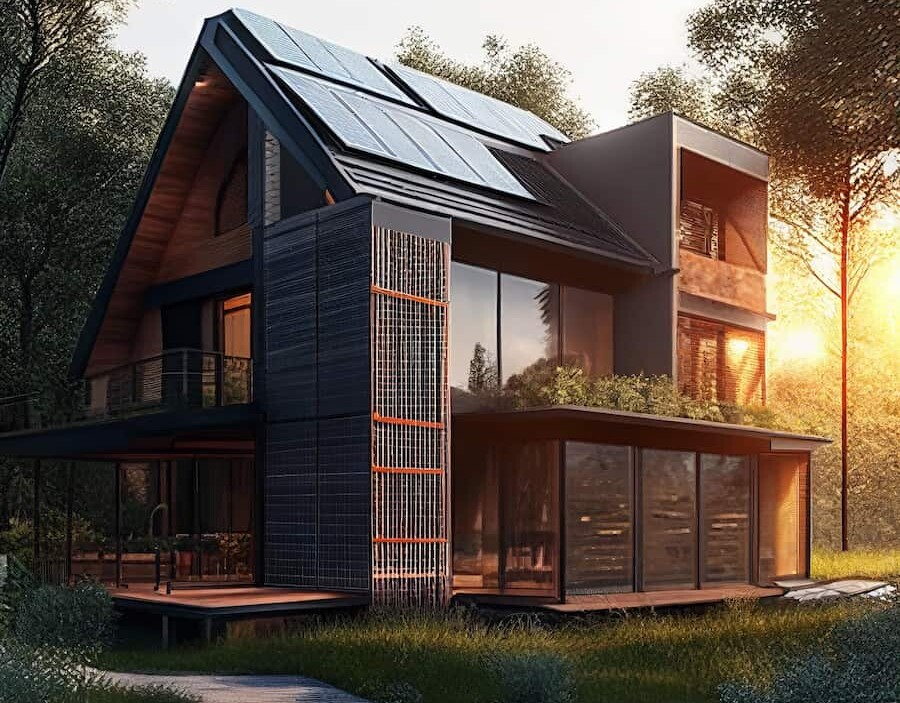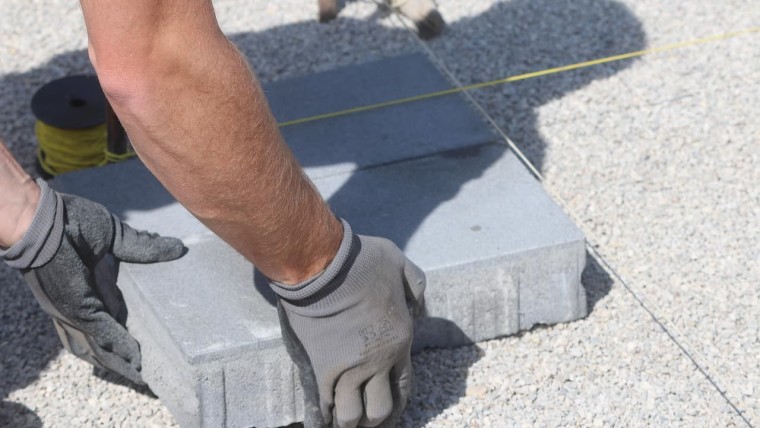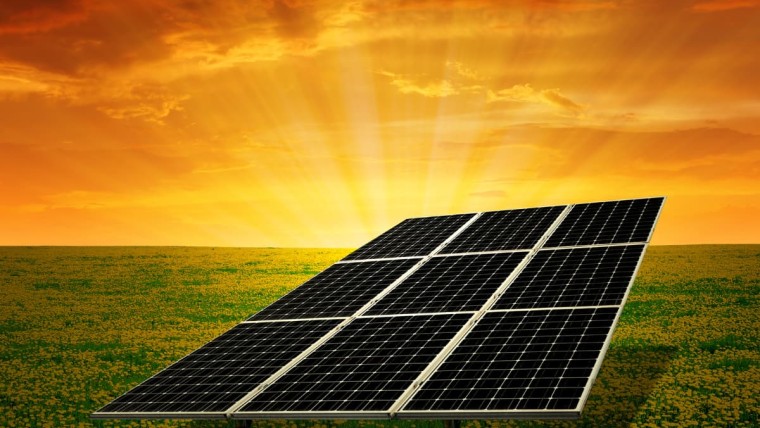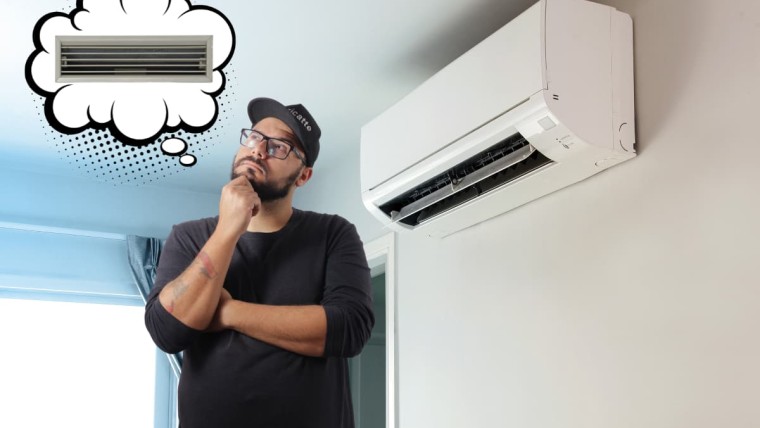In France, some 110,000 homes are equipped with photovoltaic systems... almost 40 times more than in 2015 (according to Enedis). And according to forecasts by France's Réseau de Transport d'Électricité, some 4 million homes could be fitted with solar panels by 2030, a trend fuelled by soaring energy costs and growing ecological awareness.
Individuals most often opt for small photovoltaic installations with a power of less than 3 kWp. For larger houses, with a surface area of more than 120 m², with more than 6 occupants and/or with several electrical appliances, a much higher nominal power of 6 to 9 kWp is required. This is also the case for small businesses with high electricity consumption.
In this practical guide, we will focus on photovoltaic installations of 9 kWp: what roof surface to mobilize? How many solar panels? What production capacity in kWh? How much does it cost? What about state aid? We tell you everything.
How much roof area should I mobilize to install 9 kWp of solar panels?
The amount of energy produced by a solar installation depends on the surface of the solar panels and their efficiency or yield. Before analyzing these points for a 9 kWp photovoltaic installation, let's recall the key concept of peak power.
Expressed in peak watts (Wp) or peak kilowatts (kWp), this variable measures the maximum electrical energy production capacity of a panel under optimal sunlight and temperature conditions which do not reflect the real conditions to which the solar panel will be exposed in a real installation. In France, the effective power of solar panels is generally around 80 %. Thus, the effective power of a 9 kWp solar installation will be about 7.2 kWp (80 %).
What are the average dimensions of a solar panel?
The dimensions of a solar panel can vary depending on the model and manufacturer, but most solar panels have a standard size of 1.6 meters by 1 meter, or 1.6 square meters.
Some technologies (monocrystalline solar panels) allow an interesting yield with compact dimensions, unlike polycrystalline or thin film panels, as we will see in a moment.
What is the average power of a solar panel?
The power of a solar panel depends on its size, efficiency and technology. Smaller solar panels typically have a peak output of 100 to 200 watts, while larger panels can produce (theoretically) up to 400 watts or more.
Monocrystalline solar panels generally have a higher efficiency than polycrystalline or amorphous panels, which means they produce more energy per square meter of surface area.
Power of 9 kWp: how many m² of photovoltaic panels for my house?
The power of 9 kWp corresponds to a rather large solar installation for a large house or a small business. To calculate the required solar panel area, the power of the installation is divided by the peak power of an average solar panel.
In general, a solar panel of 1 meter by 1.6 meters has a peak power of about 300 to 400 watts. So, for a 9 kWp installation, you can use 30 solar panels of 300 peak watts each, which corresponds to a total area of 48 square meters. If you choose panels of 375 Wp each, you will need 24 panels, for a total surface of 38.4 m². You have understood the logic.
How to convert 1 kWC into m²?
The conversion of kilowatt-peak (kWp) to solar panel area depends on the peak power of a solar panel. In general, a 1.6 m² solar panel will have a peak power of about 300 to 400 watts.
To calculate the area of solar panels needed for a 1 kWp installation, divide 1,000 watts by the peak power of an average solar panel. Using a 300 watt solar panel, this gives a solar panel area of about 2.7 square meters for 1 kWp. Here is a table that shows several cases:
| Peak power of a panel (Wp) | Total surface for 1 kWp (m²) |
| 100 | 10 |
| 150 | 6,67 |
| 200 | 5 |
| 250 | 4 |
| 300 | 3,33 |
| 350 | 2,86 |
| 400 | 2,5 |
This table shows the total area of solar panels required for a 1 kWp installation according to the peak power. Please note: the surface area of an individual solar panel also depends on its dimensions and the space needed between the panels to avoid shadows and facilitate maintenance. These data are estimates and may vary slightly depending on the brand and model of solar panels.
9 kWp photovoltaic system: what is the maximum weight that a roof can support?
The total weight of a solar installation depends on the surface of the solar panels and the type of mounting used. In general, the weight of solar panels varies between 15 and 20 kg per square meter. For a 9 kWp installation with a surface area of 48 square meters, the total weight of the solar panels will therefore be between 720 and 960 kg.
Attention The weight of the solar panels is only part of the total weight of the solar system. Fixings, cables and the inverter must also be taken into account. As a rule, the total weight of the solar system is about 25 to 30 kg/m².
The weight that a roof can support depends on several factors, including its type, slope, orientation and overall condition. Because 9 kWp PV systems are relatively large, you will need to conduct an accurate assessment of your roof before investing. This assessment should be done by a professional who can determine the roof's load capacity and recommend appropriate mounting systems. In some cases, installation is simply not possible in its current state, especially if your roof is made of zinc, thatch or lauze tiles (as is the case with houses in the Périgord region). If you are in this situation, we will probably suggest a floor installation.
Why should I choose to mobilize up to 9 kWp for my solar installation?
Households that opt for a 9 kWp PV system may be motivated by several reasons:
- High energy requirements 9 kWp installations are often chosen by households with high electricity consumption or to power energy-intensive equipment such as heat pumps (including swimming pools), electric vehicles or large air conditioning systems. Such an installation allows to cover a larger part of the electricity consumption and to further reduce the energy bill;
- Sufficient roof surface To opt for a 9 kWp installation, you need a large enough roof area (about 45 to 60 m² depending on the panel technology). If a household has enough space on its roof, it can consider a 9 kWp installation to maximize solar energy production;
- Profitability and economies of scale Despite the fact that state subsidies are decreasing for installations larger than 3 kWp, a 9 kWp installation can still be profitable depending on installation costs, energy savings and resale. Note also that larger installations allow for better economies of scale;
- Environmental objectives 9 kWp: households concerned about their ecological footprint and wanting to contribute to the energy transition can choose a 9 kWp installation to produce more renewable energy and reduce their consumption of energy from fossil sources.
What can be supplied by a 9 kWp photovoltaic system?
With a 9 kWp solar installation, the amount of energy produced will depend on several factors such as geographic location, panel orientation and tilt, and weather conditions. Assuming an average annual production of 1,000 to 1,200 kWh per installed kWp, a 9 kWp installation could produce between 9,000 and 10,800 kWh per year.
Here is a list of appliances and equipment that you could power with a 9 kWp installation:
- Lighting LEDs, low-energy bulbs, etc.
- Household appliances Refrigerator, washing machine, dishwasher, oven, microwave, vacuum cleaner, etc.
- Electronic equipment TVs, computers, smartphone and tablet chargers, game consoles, etc.
- Air conditioning and heating systems heat pumps, air conditioners, electric radiators, etc.
- Water heaters electrical or thermodynamic.
- Ventilation systems Simple or double flow VMC.
- Electric vehicle chargers Depending on the capacity of the battery and the frequency of recharging, you will be able to partially or fully charge an electric vehicle.
It is important to note that solar energy production varies throughout the day and year, depending on the amount of sunlight. To ensure a continuous supply of electricity, you can either consume the solar energy in real time and supplement with electricity from the grid, or install an energy storage system (batteries) to store the excess electricity produced and use it during periods of low production.
What is the production capacity in kWh of 9 kWp of solar panels?
The kWh production capacity of a 9 kWp solar installation depends on several factors, including geographic location, orientation and tilt of the panels.
In France, the annual production varies according to the regions, because of the differences in sunshine. Here is an estimate of the annual production for a 9 kWp installation in different regions:
- South of France (Mediterranean): 9 kWp x 1200 kWh/kWp = 10 800 kWh per year;
- South West France: 9 kWp x 1100 kWh/kWp = 9,900 kWh per year;
- Central France: 9 kWp x 1000 kWh/kWp = 9000 kWh per year;
- North-West France: 9 kWp x 900 kWh/kWp = 8,100 kWh per year;
- North-East of France: 9 kWp x 850 kWh/kWp = 7 650 kWh per year.
These figures are estimates based on regional averages and may vary depending on local conditions and installation. Note: According to INSEE, the average electricity consumption is 2,223 kWh per person.
How much does it cost to install a 9 kWp solar kit?
The cost of a 9 kWp solar installation depends on several factors such as the quality of the solar panels, the complexity of the installation and the labor costs. In France, the average cost of a solar installation of this size is between 12,000 and 20,000 euros, excluding subsidies and tax credits.
Of course, the initial cost can be amortized in a few years thanks to the savings on the electricity bill and the resale of excess energy to EDF, if applicable.
Photovoltaic installation of 9 kWp: what state aid?
To encourage households to use renewable energies, the State offers various financing aids.
The self-consumption premium for photovoltaic installations
The self-consumption premium, also called "investment premium", depends on the total installed photovoltaic power (in kWp). Its terms are defined quarterly by decree. Thus, between February 1 and April 30, 2023, the amounts have been revised upwards in mainland France:
- Power of the installation ≤ 3 kWp : 500 € / kWp ;
- Power of the installation ≤ 9 kWp : 370 € / kWp ;
- Power of the installation ≤ 36 kWp : 210 € / kWp ;
- Power of the installation ≤ 100 kWp : 110 € / kWp.
This aid is granted without income conditions, but requires the use of an RGE qualified professional.
MySolarRenovationPrime
Households can also take advantage of MaPrimeRénov' solaire, which depends on the installation and the income of the applicant. It is generally only granted to photovoltaic installations of 3 kWp or less.
Sale of surplus for a 9kWp installation
You can resell the surplus energy produced by your photovoltaic installation to feed it back into the national electricity grid. EDF OA pays you according to a tariff that changes every quarter. For the first quarter of 2023, it is :
- 13.13 euro cents per kWp for photovoltaic installations of less than 9 kWp ;
- 7.88 euro cents per kWp for photovoltaic installations with a peak power between 9 and 100 kWp.
Photovoltaic installation of 9 kWp: what about the reduced VAT?
Only photovoltaic installations of 3 kWp or less can benefit from the reduced VAT rate of 10 %. Installations of 9 kWp are therefore taxed at the standard rate of 20 %.
Local government support for photovoltaic installations
Local government support for photovoltaic installations varies across the regions, departments and municipalities of France. These aids can take different forms, such as subsidies, soft loans or tax exemptions. Some examples:
- Vaucluse: the departmental council grants a subsidy of 10 % of the total amount before tax, capped at 2 000 €, for the installation of a combined solar system;
- Grand Paris Seine Ouest: 800 € for a combined solar system, and 500 € for a photovoltaic collector;
- Alsace: subsidy of 750 € per kWp for solar panel installations not exceeding 100 kWp;
- Corsica: subsidy of 2 € per Wc, capped at 6 000 € for individual houses.
Which panel surface for a 9 kWp installation: to conclude
The solar panels have an average size of about 1.6 meters by 1 meter, with a peak power ranging from 100 to 400 watts.
A 9 kWp photovoltaic system requires approximately 38.4 to 48 m² of solar panels and can produce between 7,650 and 10,800 kWh of energy per year, depending on geographic location and weather conditions.
The average cost of an installation of this size in France is between 12,000 and 20,000 euros, but can be reduced thanks to state and local government aid.
A 9 kWp installation is suitable for households with high energy needs and sufficient roof space.
9 kWp photovoltaic system: frequently asked questions (FAQ)
How to convert kWp to kWh?
The conversion of kilowatt-peak (kWp) to kilowatt-hours (kWh) is not straightforward, as it depends on several factors, such as solar irradiation, orientation and tilt of the solar panels, and local weather conditions.
However, the annual energy production in kWh can be estimated from the power in kWp by using an average production factor, called the "coefficient of performance". This factor varies according to the geographical location and climatic conditions. In France, this factor generally varies between 850 and 1200 kWh/kWp per year.
To convert the power in kWp to energy production in kWh, simply multiply the power in kWp by the average coefficient of performance :
Annual production in kWh = Power in kWp × Average performance coefficient
For example, if you have a 3 kWp photovoltaic installation in a region where the average coefficient of performance is 1,000 kWh/kWp per year, the annual energy production will be :
Annual production in kWh = 3 kWp × 1 000 kWh/kWp = 3 000 kWh
What surface of solar panels for a house of 100 square meters?
It is difficult to give a precise answer without knowing the specific energy consumption of the house. However, as a general estimate, a 100 m² house consumes on average 3,000 to 5,000 kWh per year. To cover this consumption, a solar installation of 3 to 5 kWp would be necessary, which would require about 20 to 30 m² of solar panels.

Julien G.
Juliena mechanical engineering graduate and specialist in climate engineering since 2009, has become a writer specializing in renewable energies, with expertise in heat pumps and photovoltaic solar panels for individual housing.
See all articles by this author






